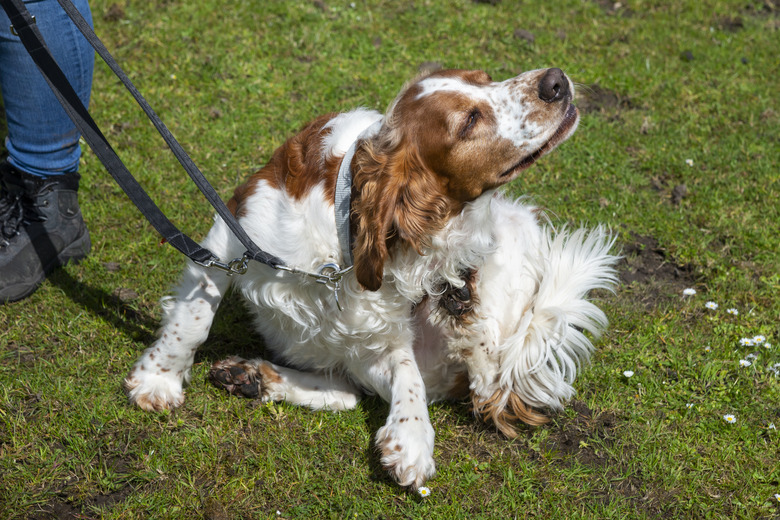How Do I Know What My Pet Is Allergic To?
When you're experiencing an allergic reaction, your eyes start to water, you begin sneezing or coughing, and you notice that there are some itchy, red spots on your skin. Now, you're seeing that your pet is experiencing some of these same symptoms. Does that mean they're allergic to something? If so, what allergens are bothering them? Here is some more information on pets and allergic reactions, along with what steps to take to make your pet feel better if they are experiencing symptoms.
What allergies do pets experience?
What allergies do pets
experience?
An allergy occurs when your pet's immune system is overreacting or hypersensitive when it comes in contact with an allergen. Usually, allergens are proteins from animals, insects, plants, or foods.
For example, you may notice that your dog is sneezing when the springtime rolls around because they are allergic to pollen. Or, your cat might have watery eyes because they are allergic to dust mites in your home. If your dog's belly turns red and bumpy, it could be because they are allergic to fleas in your yard. If your cat vomits after eating, they may have food allergies.
One note: If you have a hypoallergenic pet, you may be protected, but they could still be allergic to things themselves.
Symptoms of allergic reactions
Symptoms of allergic reactions
When your pet is having an allergic reaction, these symptoms may pop up:
- Sneezing
- Bumps or scabs
on the skin - Hair loss
- Itchy or smelly
ears - Swelling or
rashes on the skin, also known as dermatitis - Conjunctivitis
(pink eye) - Scabbing
- Vomiting
- Diarrhea
- Respiratory
issues - Infection
- Redness
Even if these symptoms seem mild, you should be in contact with your veterinarian as soon as possible —so you can properly treat your pet.
Treating and preventing pet allergies
Treating and preventing pet
allergies
There are a number of steps you can take to treat allergies in your pet, but you'll need to ask your veterinarian which ones are best before doing anything. Your vet might recommend giving your pet Benadryl or Allegra to treat symptoms, or giving them a bath to get rid of fleas and help with skin problems.
You may have to switch up the brand of food that you feed your dog or cat, clean your home to eliminate allergens like dust and mold and administer flea medicine to your pet on a regular basis. If your yard is filled with fleas, you'll need to use pet-safe substances to get rid of the fleas as well as wash your pet's bedding and thoroughly clean your home. Having flea shampoo on hand is a good idea, too.
Finding out what your pet is allergic to
Finding out what your pet is allergic to
You can go to the veterinarian to get allergy testing done for your pet to discover the cause of their allergic reactions. Your vet may use intradermal allergy testing, where your vet injects small quantities of allergens into your pet's skin. Your pet will need to be shaved in a small area on their skin where the allergy shots will be administered. After a short incubation period, your vet will see where your pet's skin becomes red and starts to swell to determine what environmental allergens your pet is allergic to. This kind of testing does not work for food allergies, but it is the gold standard for environmental allergens.
Another option is blood allergy testing, though it's known to not be as accurate as intradermal allergy testing because false positives can occur. But, all you need to do is ask your vet to draw your pet's blood and test it for allergies. If your vet says your pet is not a good candidate for intradermal allergy testing, then blood testing could be a solid alternative.
While there are at-home testing kits that you can buy, they may not be approved by a regulatory body. These kits also test sensitivities, not allergies. Plus, they will not be as accurate as a test from your veterinarian. According to the Cummings Veterinary Medical Center at Tufts University, using saliva and blood tests could lead to the false identification of many common foods as allergens. Instead, they recommend using the elimination diet to determine food sensitivities.
In summary
In summary
If your pet seems to be experiencing allergies, you can get them tested at your veterinarian. Then, you can find out ways to prevent allergies from occurring and treat them if they occur again — guaranteeing your dog has a happy and healthy life.


